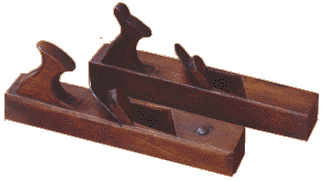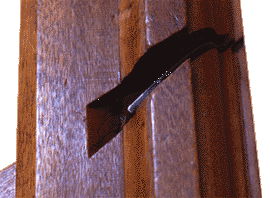
Slavery and the Apprentice System
In Europe of the late 18th century, a young tradesman interested in a particular craft would learn the trade from an established master in that field. The apprentice would be bound by an indenture, a contract detailing the relationship between the apprentice and the master. There would be clauses describing how long he would stay with the master, what the terms of payment were, and so on. Once his indenture with the master was complete, the apprentice would create his masterpiece, and became a journeyman.
Journeymen were "graduated" apprentices that moved from shop to shop, waiting for a chance to become a master craftsman. There were often very stringent requirements placed on the prospective master by his trade's guild. They often demanded that a journeyman own his own shop, pass certain tests, have a certain number of years in the field, and so forth. These requirements were designed obstensibly to ensure the quality of craftsmen being produced. In practice, they ensured that a journeyman could not start his own shop and being competing with the established guild members. Journeymen would provide most or all of a master's skilled labor, and masters were reluctant to give up this valuable resource.
In colonial America, however, there was a severe shortage of skilled and semi-skilled labor. Indentures were useless when a semi-skilled apprentice could abandon his teacher for the frontier, where there was a strong demand for anyone who could do woodwork or run a forge. The demand for skilled labor of any kind was so great that the very stratified system of apprenticeship promoted by the european guilds was never successfully transplanted to the American colonies.
Slaves, on the other hand, were legally bound to their owners and could not run away without fear of retribution. Therefore, a master with an expanding business might prefer to train a slave rather than hire an apprentice.
This is probably what Nicholson did; he bought Chelor to help in his expanding business. I doubt that Nicholson bought him with the intention of training a master planemaker. In the beginning he probably did brute force work: rough cutting and then forming the tools. As Chelor became more skilled, however, he learned to make entire planes and thus became increasingly valuable to Nicholson.
Chelor and Nicholson Planes
By comparing planes stamped "Chelor" to planes stamped "Nicholson", we can conclude that Chelor made many of the planes sold by Nicholson. The stamps are exactly the same, both sharing the imprint: "In Wrentham" or "Living In Wrentham". Presumably, the planes stamped by Chelor were made by him. Planes stamped "Nicholson" look the same as the Chelor planes; they are made exactly the same way, and even have the same tool marks.
Chelor planes have an interesting characteristic: a line of chatter marks along the side of the plane. These marks, partially obscured during the finishing process, are from a rabbet plane that was used to rough out the plane body. Both Nicholson and Chelor planes have these marks. Many planes made by John Nicholson made while working in his father's shop also have these marks. There is also a subtle similarity in the chamfers on the edges. Another user of the same tools would probably have finished the planes differently.
Chelor and the Nicholson Business
Nicholson would have been responsible for selling the planes in Wrentham and neighboring towns. Therefore, it makes sense that Nicholson spent his time building his businesses and selling the planes while Chelor stayed behind and made the tools. The total number of people who worked in the shop is a matter of conjecture, although Nicholson almost certainly did not own any other slaves. If he owned other slaves, they would have been listed in the inventory.
It is also unlikely that Chelor would be able to employ any semi-skilled white labor, as he was a former slave in a time of intolerance. Therefore I would suggest that day laborers would have been hired as needed to help with the heavy tasks of rough milling timber, planing wood blanks to thickness, and other menial tasks. The rest of the work, much of which was skilled, would have been done by Chelor himself. The resulting product would then be sold by Nicholson.

